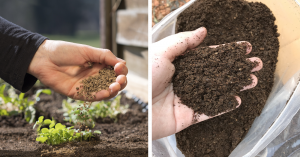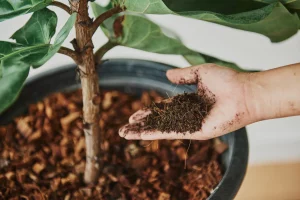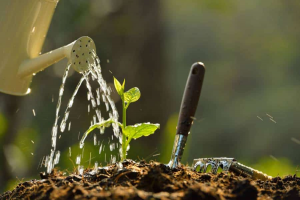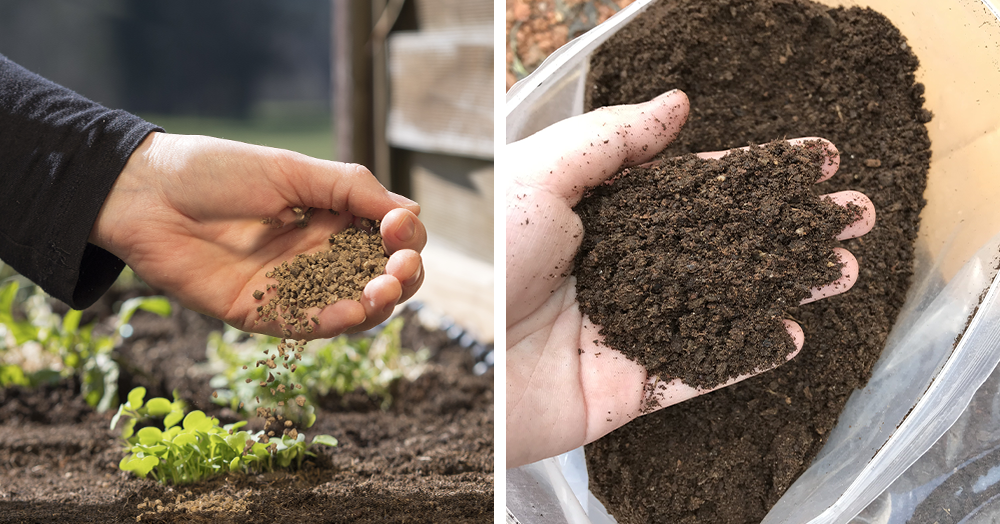Contents
- 1 Organic vs Synthetic Fertilizers (What’s Best for Indoor Plants?)
- 1.1 Why Fertilizer Choice Matters
- 1.2 What Are Organic Fertilizers?
- 1.3 What Are Synthetic Fertilizers?
- 1.4 When to Use Organic vs Synthetic Fertilizers
- 1.5 How to Combine Both Fertilizers
- 1.6 Signs Your Plant Needs Fertilizer
- 1.7 Common Fertilizing Mistakes to Avoid
- 1.8 FAQs About Fertilizers for Indoor Plants
- 1.9 Related Articles
- 1.10 Final Thoughts on Organic vs Synthetic Fertilizers
Organic vs Synthetic Fertilizers (What’s Best for Indoor Plants?)
Feeding your indoor plants can be surprisingly confusing — especially when you’re faced with dozens of options labeled “organic,” “liquid,” “synthetic,” or “all-purpose.” So, what’s the real difference, and which is best for your plants?
The truth is, both organic and synthetic fertilizers can work wonders indoors when used correctly. The secret lies in understanding how each type works and choosing the one that matches your plant’s needs and your lifestyle.
Why Fertilizer Choice Matters
Indoor plants live in closed systems — meaning they rely entirely on you for nutrients. Unlike outdoor plants, they can’t draw minerals from fresh rain, soil organisms, or natural decomposition.
That’s why choosing the right fertilizer is key to:
🌿 Consistent growth: Preventing nutrient deficiencies.
🌸 Vibrant color: Keeping leaves lush and green.
🌱 Stronger roots: Encouraging stability and drought resistance.
💧 Balanced soil: Avoiding salt buildup and nutrient lockout.

What Are Organic Fertilizers?
Organic fertilizers come directly from nature — think compost, manure, seaweed, and bone or fish meal. Instead of feeding your plants instantly, they enrich the soil first, slowly releasing nutrients as microbes break them down.
✅ Pros of Organic Fertilizer:
Builds long-term soil structure and health
Safe for roots and beneficial soil organisms
Environmentally friendly and sustainable
Ideal for low-maintenance, steady growth
❌ Cons of Organic Fertilizer:
Slower to show visible results
May have a mild natural odor
Can vary in nutrient strength
Try Worm Castings Organic Fertilizer on Amazon — a gentle, odorless organic option that’s ideal for potted houseplants and herbs.

What Are Synthetic Fertilizers?
Synthetic fertilizers are chemically formulated to provide precise amounts of nitrogen (N), phosphorus (P), and potassium (K) — the three main plant nutrients. They work fast, which makes them perfect for plants that need an immediate nutrient boost.
✅ Pros of Synthetic Fertilizer:
Instant results — visible within a few days
Easy to measure and control
Perfect for fast-growing plants like pothos and spider plants
Widely available and budget-friendly
❌ Cons of Synthetic Fertilizer:
Can burn roots if overused
Doesn’t improve soil over time
May disrupt beneficial soil microbes
A trusted choice is Miracle-Gro Indoor Plant Food, an easy-to-use liquid feed for quick, visible growth in foliage plants.

🌿 Recommended Tools & Essentials
Want to get the most out of your feeding routine? These tools make indoor fertilizing easier, cleaner, and more precise:
🌱 Soil Moisture & pH Meter – helps decide when it’s time to feed.
🪴 Self-Watering Pots – prevent overwatering after fertilizing.
Small, inexpensive tools like these can dramatically improve your fertilizing results and plant health.
When to Use Organic vs Synthetic Fertilizers
Each fertilizer type has its strengths, so the best choice often depends on your goals and the kind of plants you’re growing.
| Situation | Best Fertilizer Type | Why |
|---|---|---|
| Building long-term soil health | Organic | Boosts microbes & structure naturally |
| Reviving weak plants fast | Synthetic | Immediate nutrient availability |
| Seedlings and herbs | Organic | Gentle, prevents burning tender roots |
| Busy schedules | Synthetic | Quick, simple, time-saving |
| Sustainable gardening | Organic | Eco-friendly and renewable source |
How to Combine Both Fertilizers
You don’t always have to choose one or the other — many successful indoor gardeners combine both for the best results.
Here’s how:
- Start with organic: Use compost tea, worm castings, or slow-release organic pellets monthly to feed soil microbes.
- Add synthetic boosts: Every few weeks, give a small dose of liquid fertilizer for a quick nutrient hit.
- Flush the soil: Once a month, water thoroughly to remove excess salts and prevent fertilizer burn.
This balanced approach gives you fast results and long-term soil health — the best of both worlds.
For more fertilizer insights, visit the Royal Horticultural Society’s feeding guide.
Signs Your Plant Needs Fertilizer
Even with good care, indoor plants eventually use up nutrients in their pots. Here’s how to know it’s time to feed:
🟡 Yellowing leaves (especially lower ones)
🪴 Slow or stunted growth
🍃 Pale leaf color or dull foliage
🌸 No new shoots or flowers
When you spot these signs, start with a half-strength feed and monitor results over two weeks.
Common Fertilizing Mistakes to Avoid
| Mistake | Problem | Fix |
|---|---|---|
| Over-fertilizing | Root burn, brown tips | Use half-strength first |
| Feeding too often | Salt buildup in soil | Flush soil monthly |
| Skipping winter break | Dormant plants stressed | Pause feeding in cold months |
| Using outdoor fertilizer indoors | Too strong for potted roots | Choose indoor-safe formulas |
FAQs About Fertilizers for Indoor Plants
1. Is organic fertilizer always better than synthetic?
Not necessarily — organic works slowly but builds long-term soil health, while synthetic gives fast, visible growth.
2. Can I mix organic and synthetic fertilizers together?
Yes, but alternate applications (2–3 weeks apart) to avoid nutrient overload.
3. What’s the best fertilizer ratio for indoor plants?
Look for balanced blends like 10-10-10 or 20-20-20 for general use, or 3-1-2 for leafy plants.
Related Articles
Final Thoughts on Organic vs Synthetic Fertilizers
Whether you prefer natural options or fast-acting formulas, both organic and synthetic fertilizers can help your indoor plants thrive. Organic nourishes the soil for the long run, while synthetic delivers quick, visible growth. Mix them strategically, follow a simple schedule, and your indoor plants will reward you with lush leaves, strong roots, and year-round vitality.

